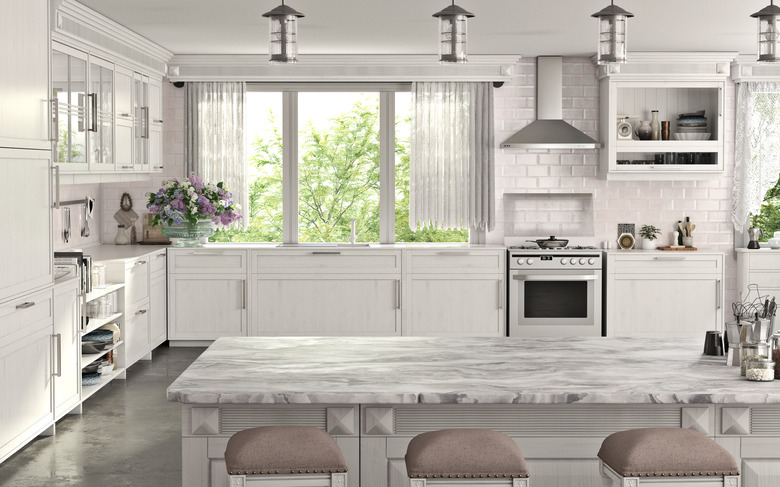How To Conceal Seams On A Quartz Countertop
Creating a quartz countertop with no visible seams is a difficult task. The slab of natural stone can only be cut certain ways and in lengths to ensure it maintains a stable and even surface. Typically, installers will place the quartz in ways that the seams are vaguely visible and otherwise barely noticeable.
An uneven quartz countertop seam can be unattractive and unsanitary as it collects bits of food and oils. A good quartz countertop seam adhesive can be applied to flush out uneven areas on the surface and solve the issue.
Tip
Uneven seams can be leveled with a quality epoxy or acrylic adhesive.
Cutting Down Seam Visibility
Cutting Down Seam Visibility
Seams happen. A good seam will be inconspicuous but not invisible. If you are installing an expanse of quartz countertop, then the visibility and location of the seams can be somewhat controlled. According to Bob Vila, a counter that is longer than 120 inches may need to be fabricated in more than a single section, which will create a seam. Seams will be less visible, usually, on dark-toned quartz. Light-toned or variegated quartz countertop seams are typically much more noticeable. Quartz that has obvious veining or swaths of marbling will also show seams more than the darker shades and styles.
Working with the installer and discussing seam location while they are doing the final field measurement can ensure that seams are placed in the least obvious areas whenever possible. Minor issues, such as cabinets that are unlevel, warped materials or a slab that varies in thickness, can cause uneven seams. Olive Mill recommends that the countertops be shimmed in order to get an even and quality seam during installation.
Fixing Uneven Quartz Countertop Seam
Fixing Uneven Quartz Countertop Seam
Uneven seams can be corrected with a filler, such as an epoxy, clear resin or acrylic adhesive made for natural stone. A fast-setting epoxy will dry quickly and requires swift work. Clean the area completely and make sure it is thoroughly dry. Lay painter's tape on either side of the seam to guide the epoxy and keep it from bleeding into unwanted areas. Fill the uneven area until it is level.
For uneven seams along the backsplash or other vertical seams, use a higher viscosity epoxy that won't run when applied. To match the color or shade of marbled or variegated quarts, a resin-based color enhancer can generally conceal the repair.
Quartz Countertop Seam at Sink
Quartz Countertop Seam at Sink
A quartz countertop seam at the sink can be bothersome. If it is uneven, then it can fill with organic debris and scaly buildup from hard water residue.
Hard water is a rather common issue for most homes. While they don't cause any health concerns, the high volume of calcium carbonate and magnesium in hard water can result in scaly buildup on a quartz surface. This can build up in uneven seams and be difficult to remove. The scaly buildup in the uneven seams will also highlight the imperfection in the countertop surface.
Use gentle abrasives to remove hard water stains to ensure that the quartz is returned to its pristine condition without suffering any further damage. Clean with a plastic brush, not steel wool or nylon, which can dull the quartz surface. Fill the uneven seam to cut down on debris collecting in the area.
